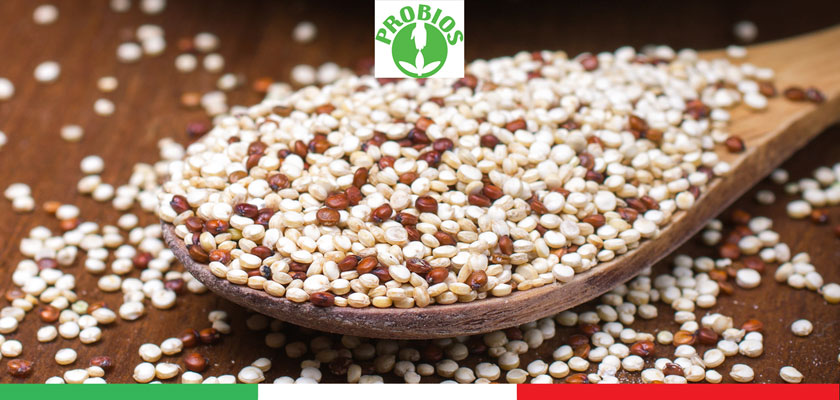
Quinoa, a superfood “pseudocereal”, has become a very common ingredient and has abandoned its identity of “niche product” a while ago.
According to Coop’s report from 2016, the sales volume of this product in the large retail doubled in the latest year and reached 1,6 million Euros[1].
Cultivated for thousand years in Central and South America, quinoa has always been a key ingredient in the diet of the Andeans, and it was also considered a sacred plant during religious ceremonies. For this reason quinoa was bound by the Spanish and not imported to Europe, as happened for corn and potatoes instead. A “forgotten” plant which wasn’t rediscovered until the eighties.
As a matter of fact, quinoa seeds are very rich from a nutritional point of view: they’re higher in proteins than the more popular cereals, such as corn, wheat and rice, and they have a high organic value since they contain all the essential amino acids. Moreover, they’re easy to digest and gluten free.
That’s the reason why quinoa is an extremely interesting food, so much that FAO defined 2013 as the international quinoa year. The great interest towards this product pushed the western countries, from United States to Europe, to try to cultivate quinoa locally.
Italy is also trying to cultivate it and it’s already possible to find, online or in stores, Italian harvested quinoa.
Probios was the first to promote and support local agriculture, to make sure to find this “superfood” locally and not to import it from really far away plantations.
While Tuscany and the University of Florence are still experimenting, Probios reached an agreement with Agri Daf in San Giorgio Piacentino, and since may 2016 it is able to offer gluten free Italian quinoa, currently marked down by 29%.





